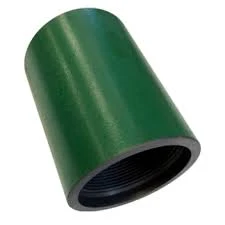- Afrikaans
- Albanian
- Amharic
- Arabic
- Armenian
- Azerbaijani
- Basque
- Belarusian
- Bengali
- Bosnian
- Bulgarian
- Catalan
- Cebuano
- Corsican
- Croatian
- Czech
- Danish
- Dutch
- English
- Esperanto
- Estonian
- Finnish
- French
- Frisian
- Galician
- Georgian
- German
- Greek
- Gujarati
- Haitian Creole
- hausa
- hawaiian
- Hebrew
- Hindi
- Miao
- Hungarian
- Icelandic
- igbo
- Indonesian
- irish
- Italian
- Japanese
- Javanese
- Kannada
- kazakh
- Khmer
- Rwandese
- Korean
- Kurdish
- Kyrgyz
- Lao
- Latin
- Latvian
- Lithuanian
- Luxembourgish
- Macedonian
- Malgashi
- Malay
- Malayalam
- Maltese
- Maori
- Marathi
- Mongolian
- Myanmar
- Nepali
- Norwegian
- Norwegian
- Occitan
- Pashto
- Persian
- Polish
- Portuguese
- Punjabi
- Romanian
- Russian
- Samoan
- Scottish Gaelic
- Serbian
- Sesotho
- Shona
- Sindhi
- Sinhala
- Slovak
- Slovenian
- Somali
- Spanish
- Sundanese
- Swahili
- Swedish
- Tagalog
- Tajik
- Tamil
- Tatar
- Telugu
- Thai
- Turkish
- Turkmen
- Ukrainian
- Urdu
- Uighur
- Uzbek
- Vietnamese
- Welsh
- Bantu
- Yiddish
- Yoruba
- Zulu
api 5ct tubing coupling
Understanding API 5CT Tubing Couplings A Comprehensive Overview
In the oil and gas industry, the drilling and production of crude oil and natural gas rely heavily on high-quality materials and components. One of the crucial components in this sector is the tubing coupling, particularly those conforming to the API 5CT specification. This article provides an in-depth look at API 5CT tubing couplings, highlighting their significance, types, manufacturing processes, and applications.
What is API 5CT?
API 5CT refers to the American Petroleum Institute specification that outlines the requirements for casing and tubing used in the drilling, completion, and production of oil and gas wells. These specifications are vital for ensuring safety, reliability, and performance under the demanding conditions encountered in wells. The API 5CT standard covers various grades of steel and outlines criteria for manufacturing, testing, and marking tubing and couplings to promote compliance with industry standards.
Significance of Tubing Couplings
Tubing couplings serve a pivotal role in connecting individual lengths of tubing, which is essential for maintaining a continuous line of flow from the wellhead to the surface. The integrity of this connection is critical, as it must withstand high pressures, corrosive environments, and mechanical stresses throughout its operational life. API 5CT tubing couplings are designed to ensure a secure and leak-tight connection, which is paramount for both safety and efficiency in hydrocarbon extraction.
Types of API 5CT Tubing Couplings
API 5CT tubing couplings are classified into several types based on their design and configuration. The most common types include
1. Regular Couplings These are standard couplings that connect two pieces of tubing. They are widely used in various well applications.
2. Long Couplings Designed for specific applications requiring a more extended connection, long couplings offer additional strength and stability.
3. Special Couplings These are designed to meet unique specifications or environmental conditions, such as sour service, which requires additional corrosion resistance.
Each type of coupling is fitted to specific grades of tubing, such as H40, J55, L80, and P110, which denote different strength levels and material properties.
api 5ct tubing coupling

Manufacturing Processes
The manufacturing of API 5CT tubing couplings involves several critical steps to ensure they meet stringent industry standards. The process generally includes
1. Material Selection High-quality steel grades specified by API 5CT are selected for manufacturing tubes and couplings.
2. Forging and Machining The selected materials undergo forging to achieve the desired shape and then are machined to precise dimensions.
3. Heat Treatment To enhance strength and toughness, the couplings are subjected to heat treatment processes, which may include quenching and tempering.
4. Non-Destructive Testing (NDT) Rigorous testing methods, such as ultrasonic and magnetic particle testing, are performed to detect any internal or surface defects.
5. Certification Finally, the couplings are certified to meet API 5CT standards before being shipped to clients.
Applications
API 5CT tubing couplings are primarily utilized in oil and gas well drilling and production operations. Their applications can be summarized as follows
- Production Tubing Connecting sections of tubing that transport hydrocarbons from the reservoir to the surface. - Injection Wells Used in water or gas injection wells to maintain pressure and enhance oil recovery. - Geothermal Wells Serving similar functions in geothermal applications, providing efficient heat extraction.
Conclusion
API 5CT tubing couplings are integral components in the oil and gas drilling industry, facilitating efficient and safe operations. Their design, manufacturing, and rigorous adherence to standards ensure that they perform reliably under the most demanding conditions. As the industry continues to evolve, the quality and innovation in tubing couplings will remain crucial for optimizing hydrocarbon extraction processes, ensuring safety, and enhancing operational efficiency. Understanding the importance and functionality of these couplings is essential for anyone involved in the oil and gas sector, from engineers to field operators.
-
Tubing Pup Joints: Essential Components for Oil and Gas OperationsNewsJul.10,2025
-
Pup Joints: Essential Components for Reliable Drilling OperationsNewsJul.10,2025
-
Pipe Couplings: Connecting Your World EfficientlyNewsJul.10,2025
-
Mastering Oilfield Operations with Quality Tubing and CasingNewsJul.10,2025
-
High-Quality Casing Couplings for Every NeedNewsJul.10,2025
-
Boost Your Drilling Efficiency with Premium Crossover Tools & Seating NipplesNewsJul.10,2025







